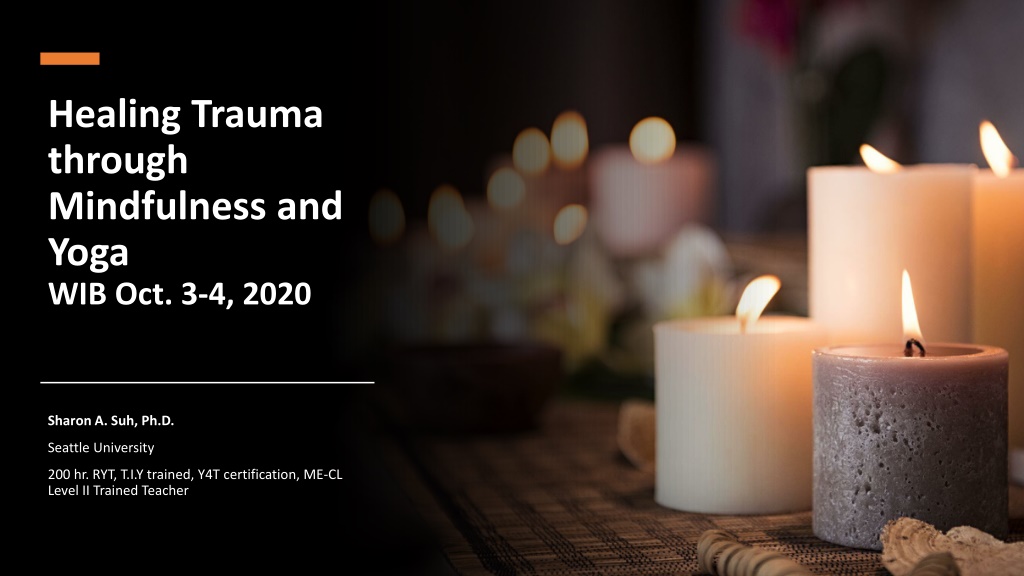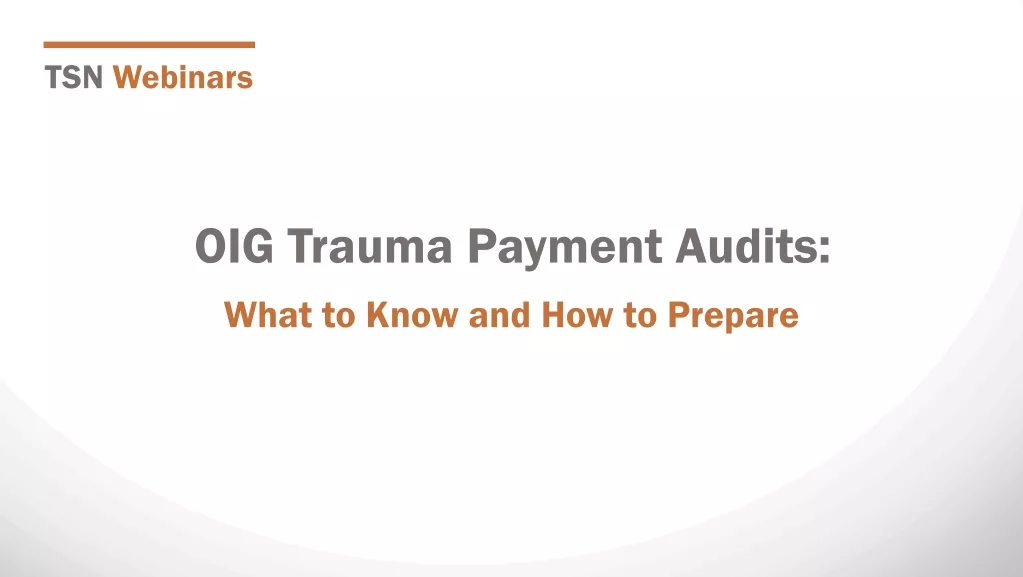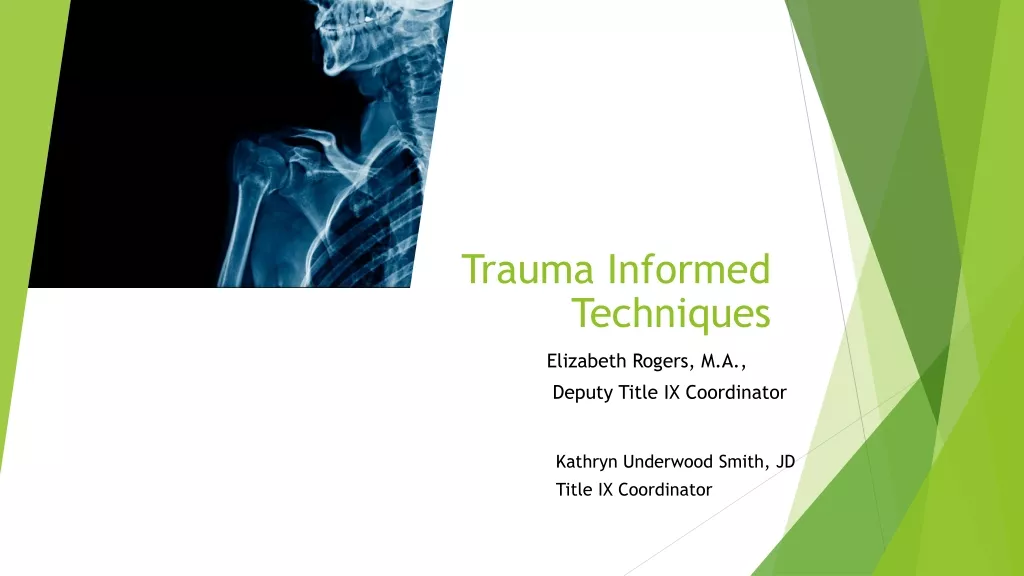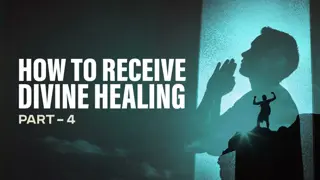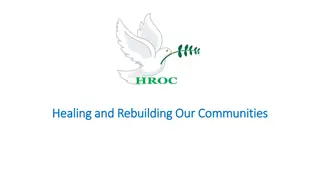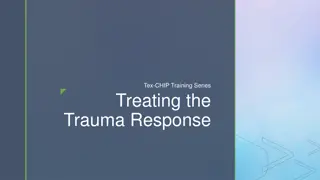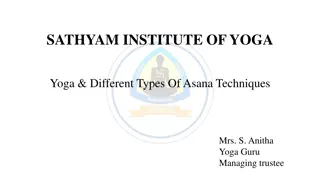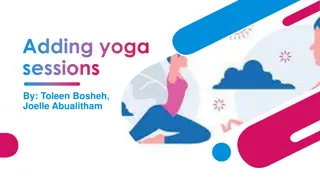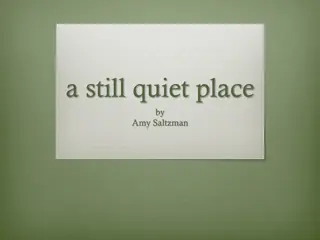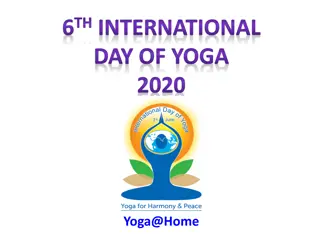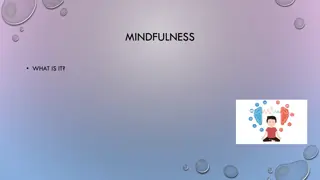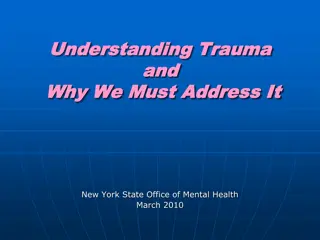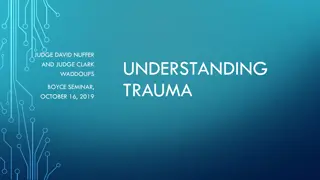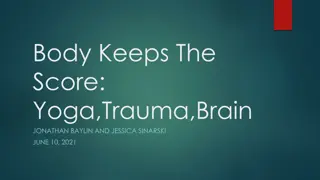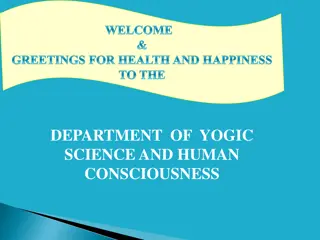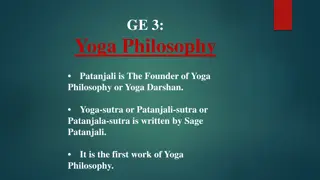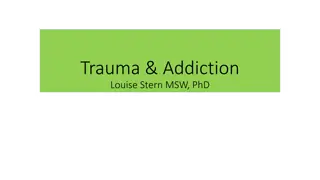Healing Trauma Through Mindfulness and Yoga with Sharon A. Suh, Ph.D.
Explore the profound impact of trauma on our bodies and minds, and how mindfulness and yoga can offer healing and freedom. Gain insights into the nature of trauma, triggers, and common symptoms, while learning to shift from reaction to response. Discover how awareness and choice lead to inner transformation and empowerment, with practical guidance from a seasoned expert like Sharon A. Suh.
Download Presentation

Please find below an Image/Link to download the presentation.
The content on the website is provided AS IS for your information and personal use only. It may not be sold, licensed, or shared on other websites without obtaining consent from the author. Download presentation by click this link. If you encounter any issues during the download, it is possible that the publisher has removed the file from their server.
E N D
Presentation Transcript
Healing Trauma through Mindfulness and Yoga WIB Oct. 3-4, 2020 Sharon A. Suh, Ph.D. Seattle University 200 hr. RYT, T.I.Y trained, Y4T certification, ME-CL Level II Trained Teacher
Awareness leads to choice and choice leads to freedom. Moving from Reaction to Response and response-ability
Trauma is much more than a story about something that happened long ago. The emotions and physical sensations that were imprinted during the trauma are experienced not as memories but as disruptive physical reactions in the present What is What is Trauma? Trauma? Where does Where does it live? it live? Neuroscience research shows that the only way we can change the way we feel is by becoming aware of our inner experience and learning to befriend what is going on inside ourselves. Bessel van der Kolk, The Body Keeps the Score
The absence of choice Natural reaction to unnatural experiences or to overwhelming experiences. What is What is Trauma? Trauma? Trauma as a survival response in the body Events for which we had no choice Any experience that overwhelms our experience to cope For real change to take place, the body needs to learn that the danger has passed and to live in the reality of the present. Bessel van der Kolk
What are Triggers? What are Triggers? A trigger is a physiological response outside of the survivor s control that remind them of past trauma. Symptoms of trauma can remain dormant, accumulating over years or even decades. Then, during a stressful period, or as a result of another incident, they can show up without any warning (Peter Levine). This Photo by Unknown Author is licensed under CC BY-NC-ND
Common symptoms of trauma and triggers
Shock trauma as a one-time event like natural disaster or accident Cumulative or Complex trauma- occurs over time within specific settings and scenarios- child abuse, sexual abuse, incarceration, racism, domestic violence, an abusive boss. Historical and intergenerational trauma experienced by entire communities which leaves emotional, psychological, and physical wounds. Examples: slavery, genocide, forced relocation, poverty, destruction of cultural practices. Big T trauma- large scale event Little t trauma- death by a thousand paper cuts such as microaggression Race-based Trauma Types of Trauma
70% experience at least one Big T event in their lives 30% experience 4 or more Big T events in their lives Most people don t experience PTSD and other forms of Complex Trauma, but 20% due Acute Stress Disorder- symptoms fade within a month or so PTSD and Complex trauma symptoms continue through time and affect the brain and physical health PTSD responses are normal survival responses to unusual events, but often trauma survivors can t distinguish between real and past dangers But why focus on trauma? Because we all have it
Mindfulness as skillful action according to the Buddha Paying attention to the interconnectedness between the body and mind Increased capacity to be with the uncomfortable Understanding nature of thought and emotions Recognizing habit patterns and conditioned behavior Can bring us back into present moment awareness Can bring us back into the body
Trauma as embodied experiences that mindfulness illuminates Mindfulness helps us notice when we are getting into the trauma vortex so we can do what we need to be safe, or safe enough Mindfulness develops resources to help bring us back into present moment awareness because when we are triggered we are often stuck in the past Mindfulness through meditation and movement helps the body know that it is safe This Photo by Unknown Author is licensed under CC BY-ND
Benefits of practicing mindfulness and embodied practices such as yoga Strengthens your ability to switch from reactivity when triggered and emotionally dysregulated and the neocortex goes off-line to skillful response Normalizes unpleasant sensations and weakens the impulse to push away unwanted feelings Increases your ability to distinguish between past, present and future and helps you stay in the present, even if unpleasant without the situation needing to change Long term meditators can hold onto joyful experiences longer! Enables you to appropriately discern real and present danger from past triggers and/or future fears
Some Practices for Healing Noticing the Connection between Emotions and Physical Sensations 5-7-8 Breathing Compassionate Touch Meditation This Photo by Unknown Author is licensed under CC BY-SA
